- Home
- > Nature online
- > British natural history
- > Exploring British wildlife: bluebells
- > Identify your bluebells
- > Bluebell-like plants
Primary navigation
Bluebell-like plants
In the UK in springtime, especially in gardens and parklands, you can find many bluebell-like plants. They may be bulbous with blue six-petalled flowers. Bluebells, however, are easily separated from these by having two bracts at the base of each flower.
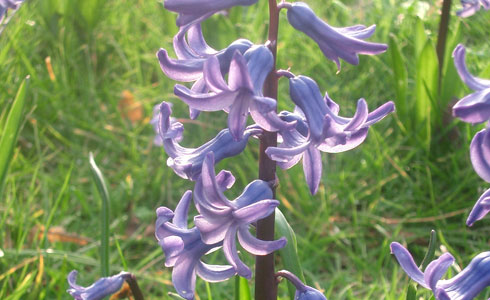
Hyacinth, Hyacinthus orientalis, in cultivation. This plant sometimes occurs as a garden escape. It comes in a wide range of colours, has a strong sweet perfume and flowers earlier than most bluebells.
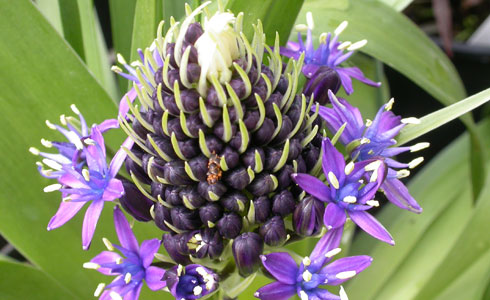
Portuguese squill, Scilla (Oncostemma) peruviana, in cultivation. This plant is a rare garden escape © F.J. Rumsey

Autumn squill, Scilla (Prospero) autumnalis, west Cornwall. This native plant is locally common in cliff-top grasslands in Devon and Cornwall with isolated populations in Gloucestershire, the Isle of Wight and southeast England. It flowers much later than bluebells and has very narrow grass-like leaves © M.A. Spencer
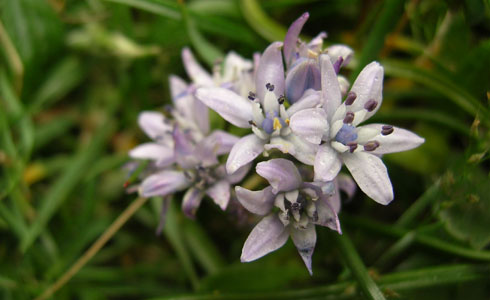
Spring squill, Scilla verna, west Cornwall. This native plant is locally common in cliff-top grasslands along the western coast of Great Britain as far north as Shetland. It flowers a little earlier than bluebells and has much narrower leaves (less than 5mm) © M.A. Spencer

Glory-of-the-snow, Chionodoxa species, are occasional garden escapes throughout the British Isles. They are similar to Scilla but the petals are fused together at the base, © M.A. Spencer

Bithynian squill, Scilla bithynica, South Essex. A native of Bulgaria and Turkey widely, planted in parks and gardens and naturalised in some areas. It has longer flower stalks than the bluebell and it also has short, stubby bracts unlike the bluebell's long, paired ones.

Greek squill, Scilla messeniaca, Greater London. A native of Greece, less often cultivated than Scilla bithynica, but reported as a rare escape from cultivation. Its bracts are short and stubby rather than long and narrow like those of the bluebell.

Pyrenean squill, Scilla liliohyacinthus, South Essex. A native of southern France and northern Spain, where it grows alongside bluebells. A rare escape from gardens. The leaves are more tongue-shaped than in bluebells. The flowers are more open, they are not bell-like, and it also has a very different lily-like bulb. It also has only single flower bracts.
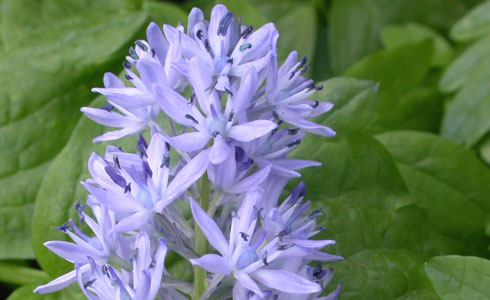
Italian bluebell, Hyacinthoides italica, Greater London. Rarely cultivated but sometimes persisting in derelict gardens. This has the paired bracts shown by all true bluebells. It has more open and generally smaller flowers than the Spanish bluebell, with only the base of each stamen attached to the petals.
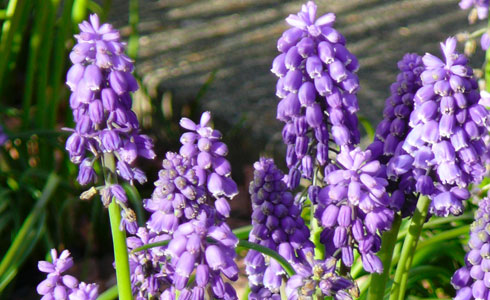
Muscari armeniacum, Berkshire. There are several species of Grape-hyacinths (Muscari species) and they are widespread garden escapees. One is a rare native in East Anglia. They have distinctive flowers with the petals fused almost to the tips.
Related information
External links
Toolbox
- Contact and enquiries
- Accessibility
- Site map
- Website terms of use
- © The Trustees of the Natural History Museum, London
- Information about cookies
- Mobile